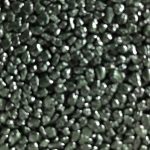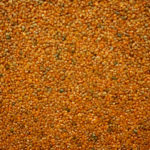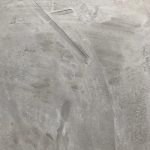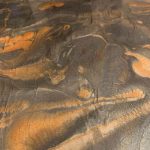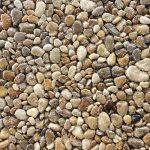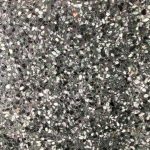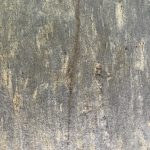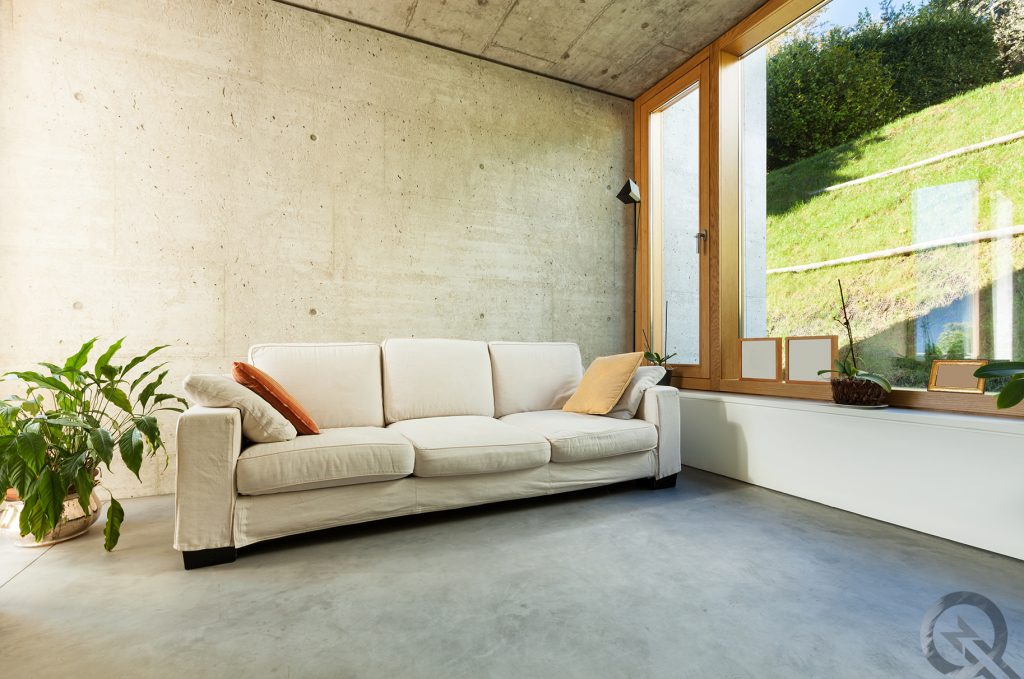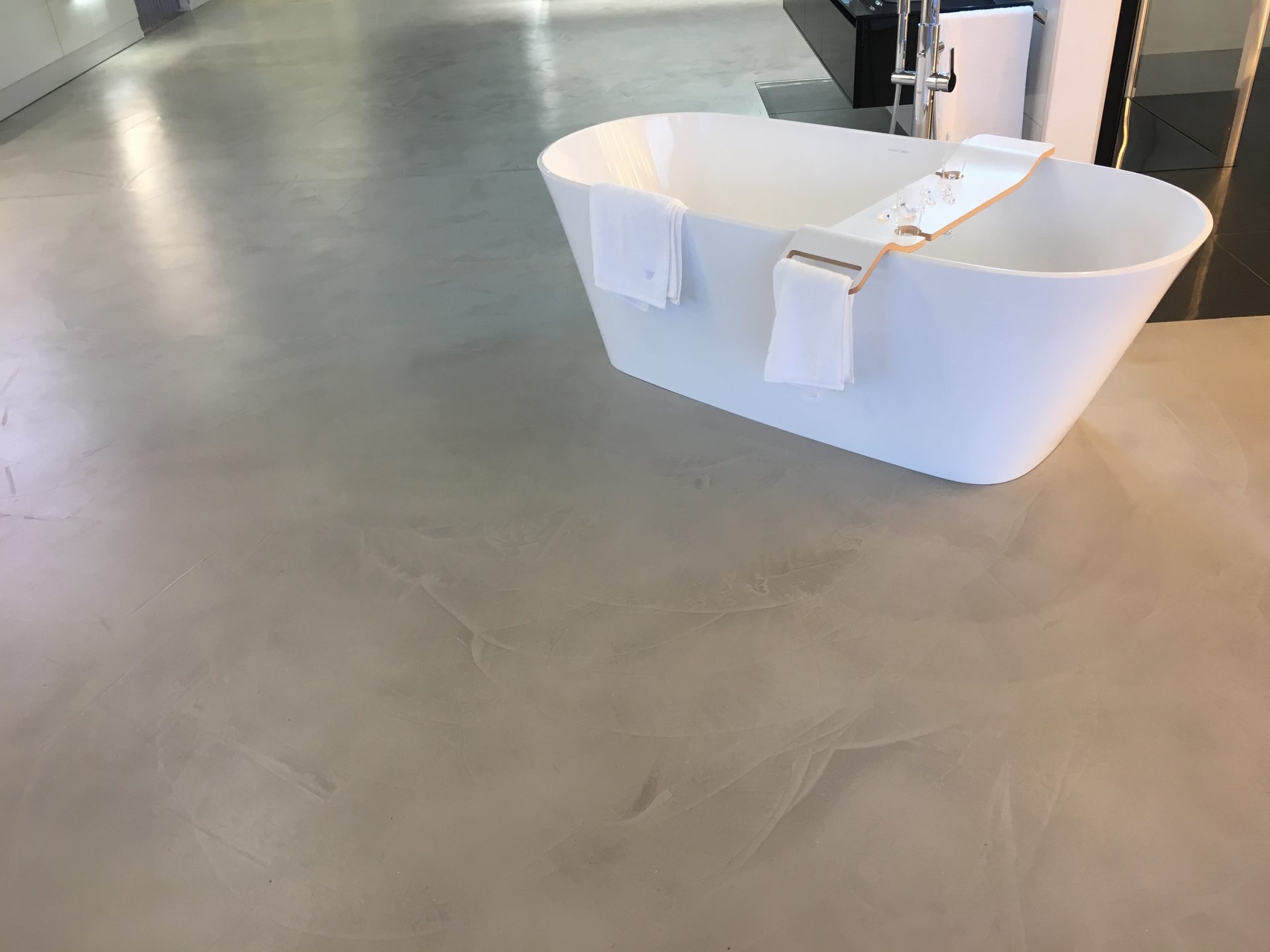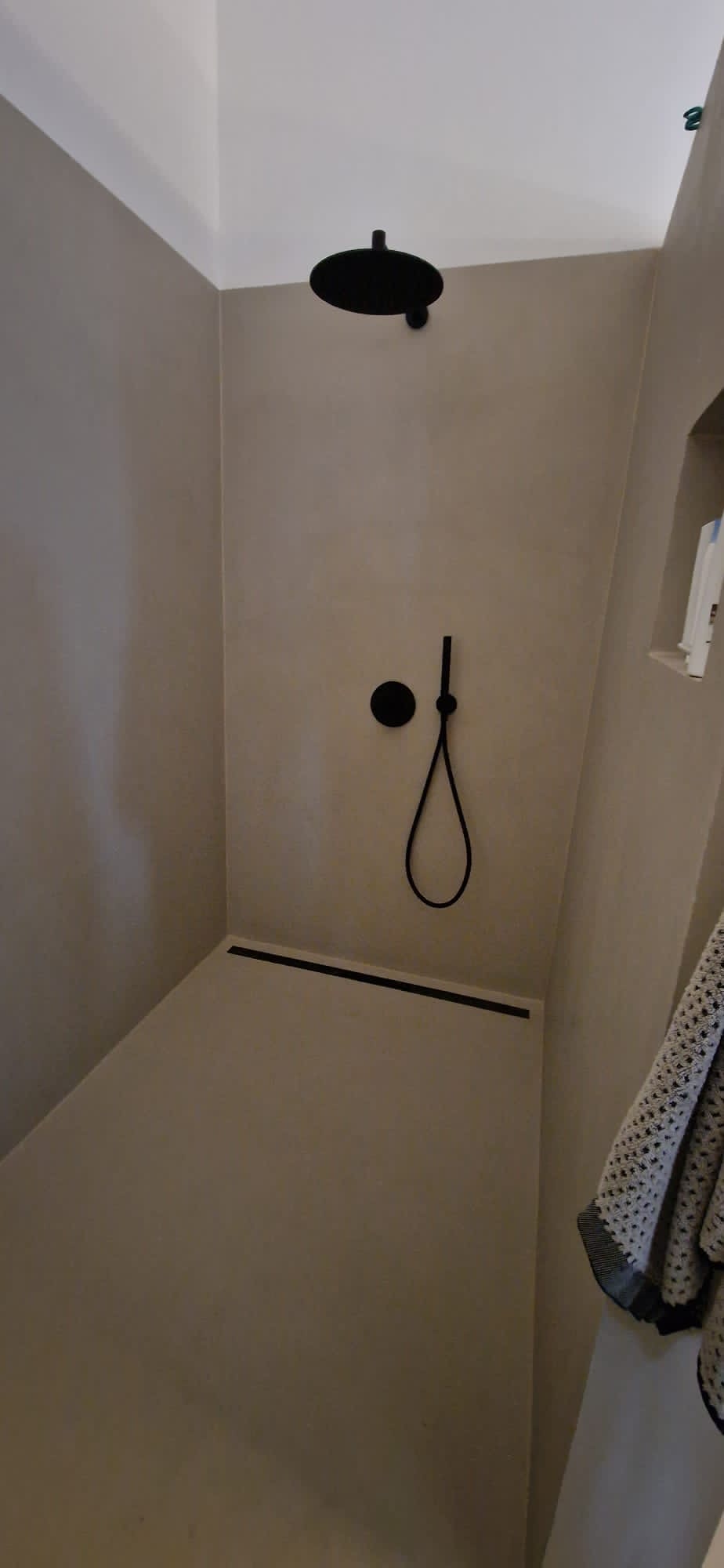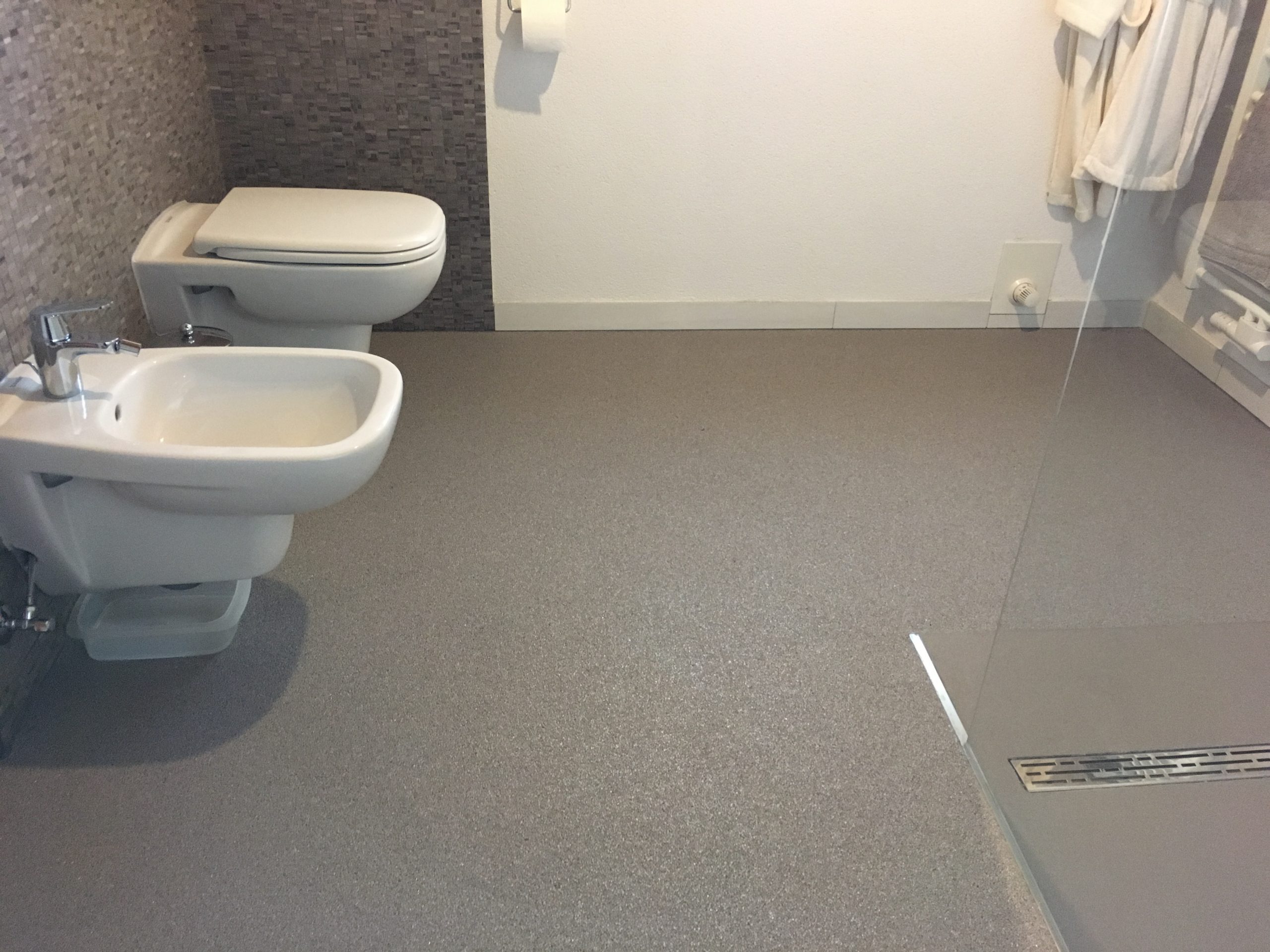In the world of modern interior design, microcement flooring is becoming increasingly popular. This versatile material has become a popular choice for flooring as it offers a unique combination of aesthetics, durability and adaptability.
Aesthetics and variety Microcement floor - a modern, mineral floor covering
A major advantage of microcement flooring is the wide range of colors, textures and finishes it offers. From smooth and polished to rustic and textured – Qubo® microcement makes it possible to design your flooring to suit your individual taste. The color palette ranges from the familiar concrete look to natural earth tones and bold, modern colors. So you can choose the perfect option for your room.
Seamless design
Microcement flooring is particularly popular because it is laid without joints. As the flooring is applied thinly and requires no joints or transitions, the result is a continuous design that makes the room appear larger and more cohesive. This continuous surface also makes cleaning easier, as there are no cracks for dirt to accumulate.
Alternative Beschichtungssysteme für das fugenlose Gestalten von Flächen werden unter Wissenswertes “Fugenloser Boden” beschrieben.
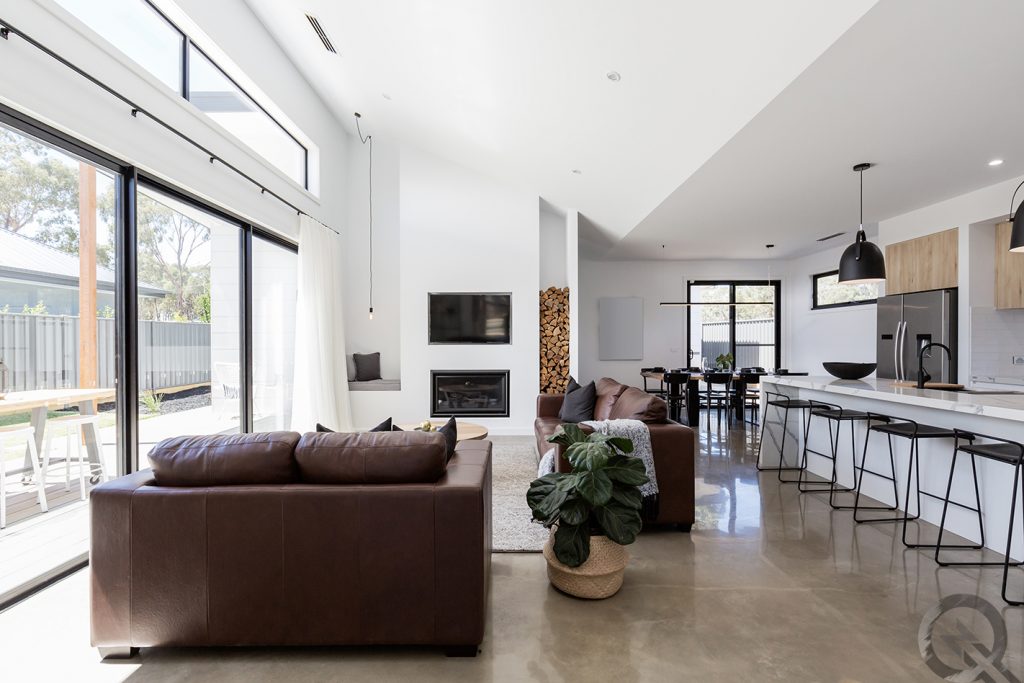
Durability and care
The microcement floor is known for its durability. It is resistant to wear, scratches and stains, making it ideal for high traffic areas such as living rooms, kitchens and bathrooms. Maintenance is also easy: regular mopping is enough to keep the surface in top condition.
Microcement floor - installation by a specialist company
As a correctly installed microcement floor offers many benefits, it is important to emphasize that professional installation requires a certain level of expertise. It is advisable to hire an experienced contractor to ensure that the flooring is properly prepared, applied and sealed.
Find a specialist company near you at Qubo® bases. Arrange your personal consultation appointment and plan your Qubo® microcement floor together.
Microcement flooring is a modern and appealing choice for those looking for a contemporary look for their space. With a wide range of design options, durability and easy maintenance, microcement is an interesting option for any room in your home or commercial premises. However, remember to enlist the services of a professional to achieve the best possible results.
On which substrate can a microcement floor be laid?
A microcement floor can be created on a variety of substrates as long as they are stable, level, clean and free from moisture and dirt. Here are some examples of substrates on which a microcement floor can be installed:
1. concrete, screed, smooth coatings:
Smooth concrete surfaces and screeds provide a stable base for laying Qubo® Microcement. Before laying Qubo® Microcement, the substrate must always be cleaned. Any cracks are filled and any unevenness is evened out. A primer layer is always required to ensure the microcement floor adheres to the concrete. The professional will decide which primer is the right one for the respective building, depending on the condition and material of the substrate.
There are different types of screed. Our useful information section on screed types provides a good overview.
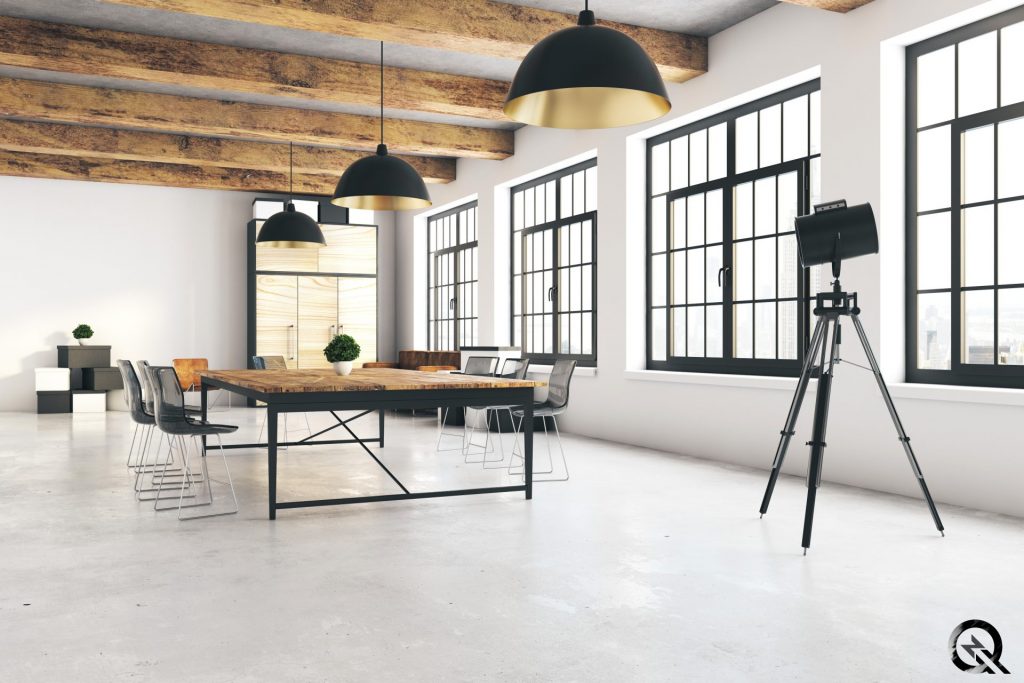
2. Special work steps on tiles:
Loose tiles must be removed before laying. When laying on tiles, the joints between the individual tiles must be filled with Qubo® Fiber Ground. This creates an even surface for laying the microcement floor.
3. Special work steps on wood:
Microcement can also be laid on wooden subfloors, but special preparations are necessary here. The wooden floor must be stable, solid and free of moisture. A layer of glass fiber fabric and epoxy resin filler prevents cracks, detachment and movement between the individual elements of the wooden subfloor.
4. Underfloor heating:
Whether on an electric underfloor heating system or a water-bearing system – Qubo® microcement can be easily combined with the modern heating system.
With electric underfloor heating, the heating mats are fixed to the subfloor and filled with a layer of glass fiber fabric and epoxy filler. The microcement floor is applied to the now smooth surface.
The heating loops of a water-bearing system are laid in recesses that have previously been milled into the screed. After filling the recesses, a 10 millimetre thick levelling layer is poured, on which the microcement floor is then laid.
The low installation height and the direct connection to the heating system without air pockets reduce the response times of the heating system.
For more information on the combination of underfloor heating and the seamless coating systems from Quarzkiesboden Zimmermann, see “Things to know “Milling underfloor heating“.
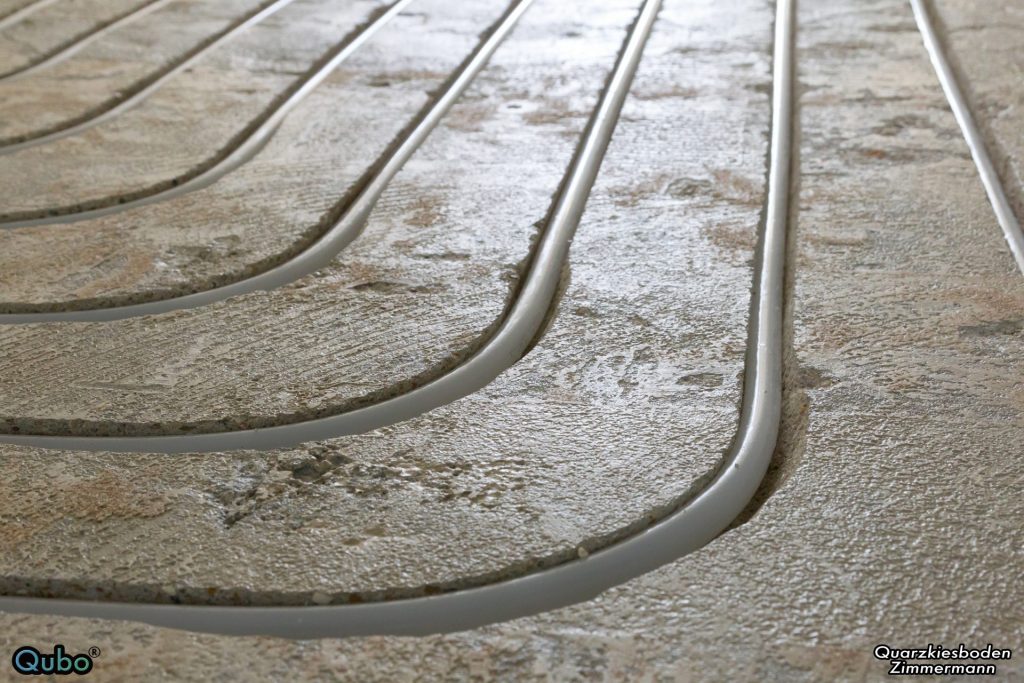
Microcement floor in a pool
Pools can also be coated with microcement. The Qubo® Aqua series is a special material that is suitable for use in permanently wet areas. The system reliably seals surfaces even if they are permanently under water. This ensures safety, an attractive appearance and, of course, …
… for a strong appearance!
Non-binding Cost estimate
Link collection
- Product page
- Worth knowing: Concrete look
- Wissenswertes: Fugenloser Boden
- Worth knowing: Screed types presented
- Worth knowing: Milling underfloor heating
- Seamless alternatives to microcement
The cementitious filler is characterized by an exceptionally low construction height of just 2 – 3 mm. This simplifies modernization in rooms with particularly small gaps under the door, for example.
The originally white filler can be tinted to almost any desired shade by adding color pigments. The classic is the concrete look.
A glossy or semi-gloss finish can be applied as required. In addition, the required slip resistance classes can be achieved with appropriate sealers.
The coating system is applied in several layers. The price depends on the size of the area to be laid and the number of layers applied. As a rule, two layers are sufficient. Additional layers can be applied for design reasons. In proportion, a small room, such as a bathroom with many corners, costs more than large rooms. On average, the price is between €120 and €180 per m².
Compared to microcement floors, the coating of walls is more expensive. For this reason, the cost of a wall coating is approx. 10 % higher compared to corresponding horizontal surfaces.
Almost any substrate can be coated. Here are some examples of usable substrates:
- Tiles
- Parquet
- Plasterboard
- Screed
- Natural stone
- Marble
- Ceramic
- OSB boards
- Metal
- Drywall
- Fiberglass wallpaper
- many plasters
- Dry, no longer working wooden panels
With an installation thickness of only 2-3 mm, the substrate must be free of unevenness. If these are present, they must be removed or filled beforehand.
Depending on the substrate material, a suitable primer ensures the necessary adhesion.
When coating wood, make sure that the wood is well dried and no longer works. Freshly felled wood and walls affected by water damage do not meet these requirements.
Due to the density of the material, the microcement floor is easily suitable for use in kitchens and bathrooms. The Qubo® Microcement Aqua series is used in permanently wet areas such as pools.
Yes, depending on the area of application, you can set the required slip resistance class with different sealers.
To ensure a long service life of the surface, we recommend using water and neutral soaps. Sealing the surface makes it easier to clean and protects it from stains.
Yes, after the heating switch-on protocol has been completely run through so that the cracks in the screed caused by the temperature change do not continue in the coating.
Erfahren Sie mehr über effizientes Heizen mit einer Fußbodenheizung in unserem Bereich Wissenswerteszu diesem Thema.
Microcement is a breathable coating that can be used indoors and outdoors, even in wet rooms. Ideal for bathrooms, wellness oases and fitness centers. Popular in kitchens and living areas, as well as conservatories and on stairs. Commercial areas such as restaurants, stores, doctors’ surgeries and laboratories are created with this special material. The leveled floor meets all hygiene requirements and can be made slip-resistant by applying an appropriate sealant. Qubo® microcement can be used to create durable, dirt-repellent, waterproof and abrasion-resistant surfaces.
Yes, our Qubo® Microcement Aqua series is 100 % waterproof. Our qualified companies ensure professional processing and correct pre-treatment of the substrate.
Solid tiles can be reworked without any problems. If they are loose in some places, they must be removed.
FAQ
Details and facts, key figures and explanations – here you will find answers to frequently asked questions about our Qubo® coating systems. If any details remain unclear, simply contact us. We will be happy to advise you personally and promptly.

